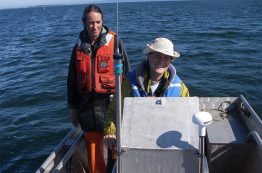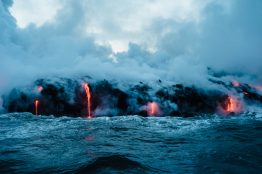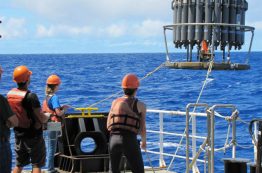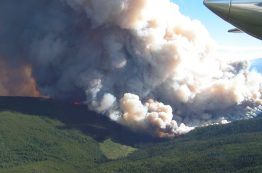By area, tidal flats make up more than 50 percent of Willapa Bay in southwest Washington state, making this more than 142-square-mile estuary an ideal location for oyster farming. On some parts of these flats, oysters grow well, filling their shells with delicacies for discerning diners. But according to experienced oyster farmers, oysters raised in other parts of Willapa Bay don’t yield as much meat.
Read more at UW News »Sarah Converse awarded Department of Interior’s highest honor
Please join us in congratulating Dr. Sarah Converse who received the Department of the Interior’s Distinguished Service Award in Washington D.C. on September 12th. The award is the highest honorary recognition an employee can receive within the Department of the Interior and is granted for “outstanding contribution to science, outstanding skill or ability in the performance of duty, outstanding contribution made during an eminent career in the Department, or any other exceptional contribution to the public service.”
Read more »Kīlauea lava fuels phytoplankton bloom in the North Pacific Ocean
A new study co-authored by University of Washington researchers examines the effects of molten lava that flowed into the ocean as the result of the eruption of Kilauea volcano in Hawai’i from April to August 2018. UW School of Oceanography professors Virginia Armbrust and Anitra Ingalls found phytoplankton growth in the typically nutrient-poor Pacific, stimulated by high concentrations of nutrients from the lava.
Read the full study »New study tracks sulfur-based metabolism in the open ocean
One of the planet’s most active ecosystems is one most people rarely encounter and scientists are only starting to explore. The open ocean contains tiny organisms — phytoplankton — that perform half the photosynthesis on Earth, helping generate oxygen for animals on land. A study by University of Washington oceanographers, published this summer in Nature Microbiology, looks at how photosynthetic microbes and ocean bacteria use sulfur, a plentiful marine nutrient.
Read more at UW News »Wildfires west of the Cascades: rare, but large and severe
Most of us think of wildfire in Washington state as something that happens east of the mountains. There’s a reason for that: more than 99 percent of wildfires in the last 40 years have been east of the Cascade Crest. But forest fires are a natural, though rare, occurrence on the west side of the mountains as well. These verdant forests don’t immediately seem like burnable material.
Read more at UW News »





